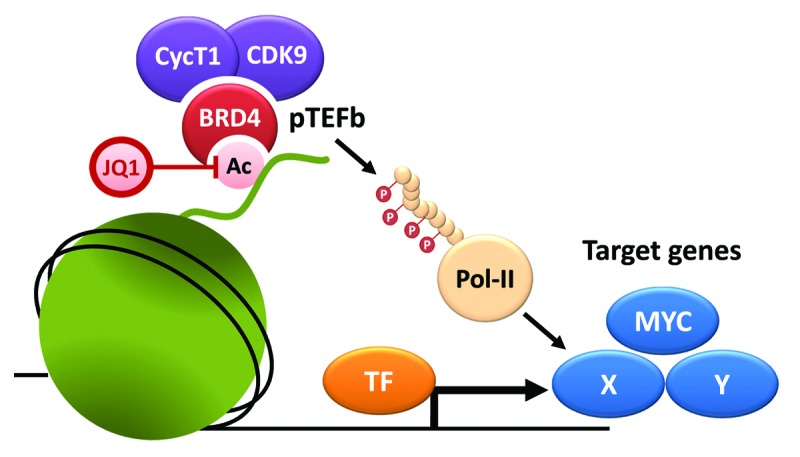
Figure 1. BRD4 recruits pTEFb to promote transcriptional elongation. BRD4 tightly binds acetylated histones via its BET bromodomains; JQ1 competes with this binding and displaces BRD4 from chromatin. One known effector mechanism of BRD4 is the recruitment of pTEFb, which, in turn, promotes transcriptional elongation of target genes through phosphorylation of RNA polymerase II (Pol-II). Inhibitory effects of JQ1 in cancer cells are associated with transcriptional suppression of specific BRD4 target genes, including MYC and others (X and Y). However, the vast context-dependency of these effects cannot be explained based on known BRD4 functions and may depend on direct or indirect interactions with transcription factors (TF).
